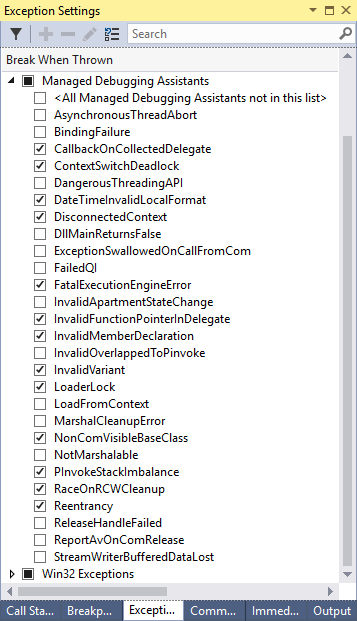

Review the managed platform invoke signature and calling convention to confirm it matches the signature and calling convention of the native target. The MDA can also activate because the calling convention, possibly specified by the xref: attribute, does not match the unmanaged calling convention. This mismatch can be caused by the managed signature not declaring the correct number of parameters or not specifying the appropriate size for the parameters. The managed signature of the platform invoke call might not match the unmanaged signature of the method being called. SymptomsĪn application encounters an access violation or memory corruption when making or following a platform invoke call. However, selecting or clearing the Thrown check box for pInvokeStackImbalance does not enable or disable the MDA it only controls whether Visual Studio throws an exception when the MDA is activated.

NET Framework version 3.5 with Visual Studio 2005, the pInvokeStackImbalance MDA will appear in the Managed Debugging Assistants list in the Exceptions dialog box (which is displayed when you click Exceptions on the Debug menu). NET Framework version 3.5, the pInvokeStackImbalance MDA is disabled by default. The pInvokeStackImbalance MDA is implemented only for 32-bit x86 platforms. The pInvokeStackImbalance managed debugging assistant (MDA) is activated when the CLR detects that the stack depth after a platform invoke call does not match the expected stack depth, given the calling convention specified in the xref: attribute as well as the declaration of the parameters in the managed signature.


 0 kommentar(er)
0 kommentar(er)
